Turquoise is a beautiful blue-green stone that has captured the hearts of many. Here in our state, with its diverse landscapes and rich geological history, hunting for turquoise can be an exciting adventure.
This article will guide you to the best spots for finding turquoise in our state and share helpful tips to make your search successful.
So, let’s dive in and explore the best places where you can find Turquoise easily!
How Turquoise Forms Here
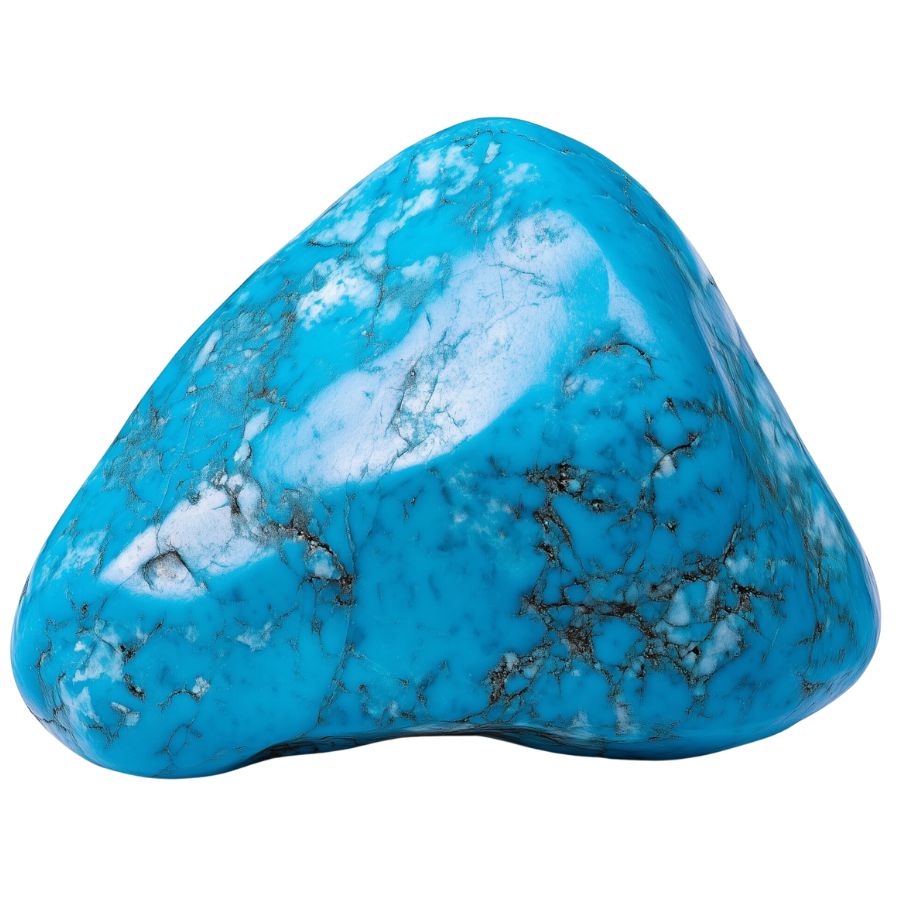
Turquoise forms through a unique process involving water and minerals. It begins when acidic water seeps into the ground, moving through rocks that contain copper and aluminum.
As this water interacts with these minerals, it breaks them down and allows the copper and aluminum to combine with phosphorus, creating turquoise.
This usually happens in shallow areas, often less than 20 meters deep, where the environmental conditions are just right.
This mineral typically fills cracks and cavities in rocks, often in dry, desert-like areas. The presence of iron can also influence its color, giving it beautiful shades of blue and green.
Over time, the turquoise hardens, resulting in the stunning gem we see today, prized for its vibrant hues and unique patterns.
The Types Of Turquoise Found in the US
Turquoise comes in a variety of stunning types, found in the US as well as in our state. Here are the types of turquoise found in the US:
Kingman Turquoise

Kingman Turquoise showcases a vibrant range of colors from pale green to deep “high blue.” Its matrix patterns can include white, light brown, or black veining, setting it apart from other turquoise types.
This stone is often stabilized to enhance its durability and color, allowing for broader use in jewelry making. The natural Kingman turquoise typically presents a medium blue hue with a water web matrix.
Kingman Turquoise is recognized as one of the most sought-after American turquoise. Its consistent supply has made it a staple in Native American jewelry and artisan crafts, contributing to its ongoing popularity.
Carico Lake Turquoise

Carico Lake Turquoise is known for its clear robin’s egg blue to vibrant lime green colors. It often features a unique spider-web matrix in brown or, more rarely, black, adding texture and shine to the stone.
What makes this stone special is its high zinc concentration, which gives it an electric lime-green hue. This color is both rare and desirable among turquoise varieties.
Gem-quality Carico Lake Turquoise is scarce, making up less than 3% of the mine’s annual output. This rarity, combined with its natural beauty, makes it a prized item for collectors and enthusiasts alike.
Lone Mountain Turquoise

Lone Mountain Turquoise is known for its bright blue to deep green colors, often featuring intricate spider web matrix patterns. These fine lines create a web-like design, enhancing its visual appeal.
This stone stands out for its exceptional hardness and color retention. It maintains its vibrant hue over time, a quality not common in all turquoise varieties.
Lone Mountain Turquoise is highly valued in the collector’s market, second only to Lander Blue Turquoise. Its ability to produce high-quality spider web turquoise makes it a favorite among jewelry artisans and collectors.
Morenci Turquoise
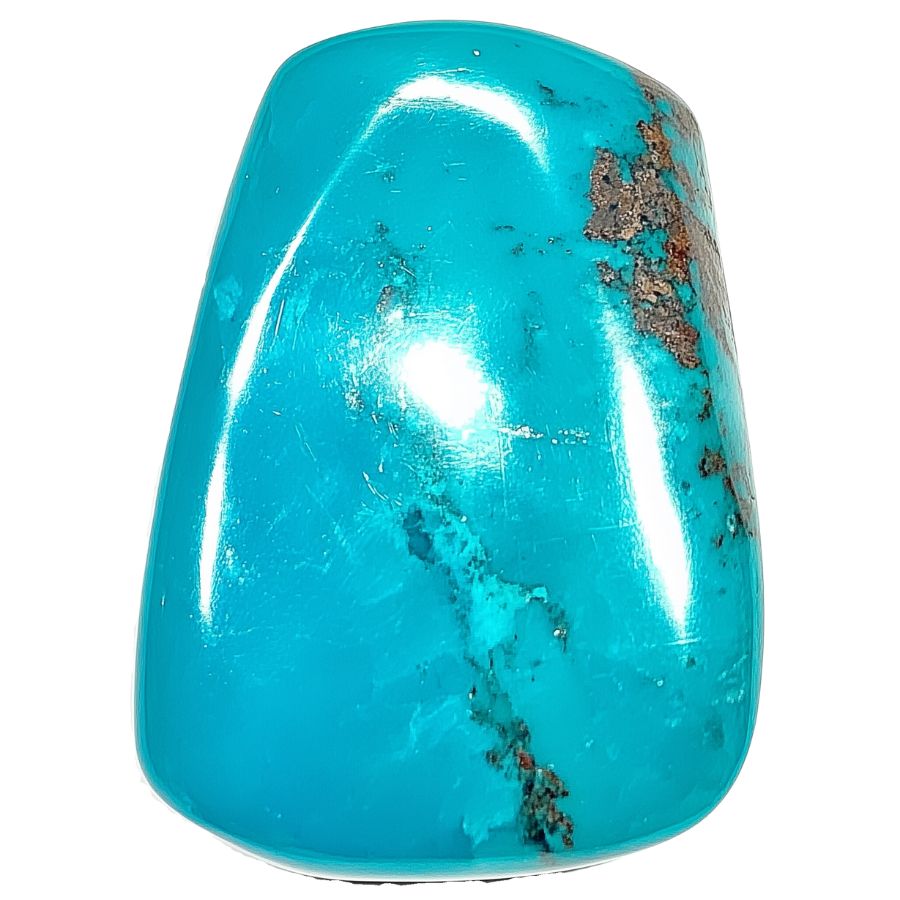
Morenci Turquoise stands out with its deep blue color, a result of its high copper content.
Its most striking feature is the iron pyrite matrix, which gives it a metallic shimmer when polished. Some pieces also show a water web matrix, creating dark blue webbing patterns.
This stone is no longer mined, making it rare and highly collectible. All available Morenci Turquoise comes from mining operations that stopped in 1984.
High-grade pieces, known for vibrant blues and pyrite matrix, make up less than 10% of the total yield.
Pilot Mountain Turquoise
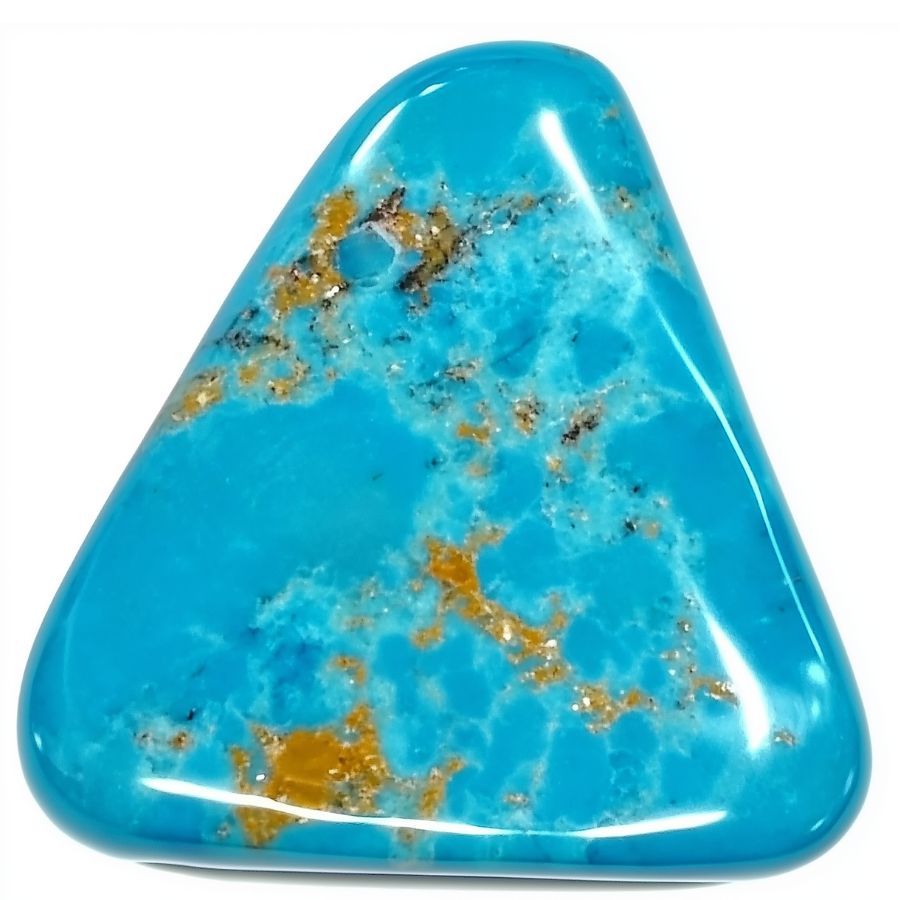
Pilot Mountain Turquoise catches the eye with its bright to dark blue hues, often showing a greenish tint.
What makes it special is its brownish-red limonite matrix, creating beautiful mottled patterns. The stone forms in hard veins, thin seams, or nuggets.
This turquoise has an interesting history, first mined around 1930. It’s known for its limited availability, with only 150 to 200 pounds of rough stone extracted twice a year. This scarcity adds to its appeal.
The unique mottled patterns of the limonite matrix make Pilot Mountain Turquoise a favorite for decorative pieces and jewelry.
Sleeping Beauty Turquoise

Sleeping Beauty Turquoise is famous for its vivid sky-blue color. Unlike many other turquoise types, it has little to no veining or matrix, giving it a pure, consistent look. The color can range from light robin’s egg blue to deeper sky blue.
This stone is naturally hard, which means it doesn’t need stabilization for use in jewelry. This quality makes it popular with jewelers. The Sleeping Beauty mine closed in 2012, making the stone rarer and more valuable.
Sleeping Beauty Turquoise became a hit in the 1970s and 80s, used in both Native American jewelry and mainstream fashion. Its consistent quality and vibrant color have made it a standard in Southwestern jewelry.
Bisbee Turquoise
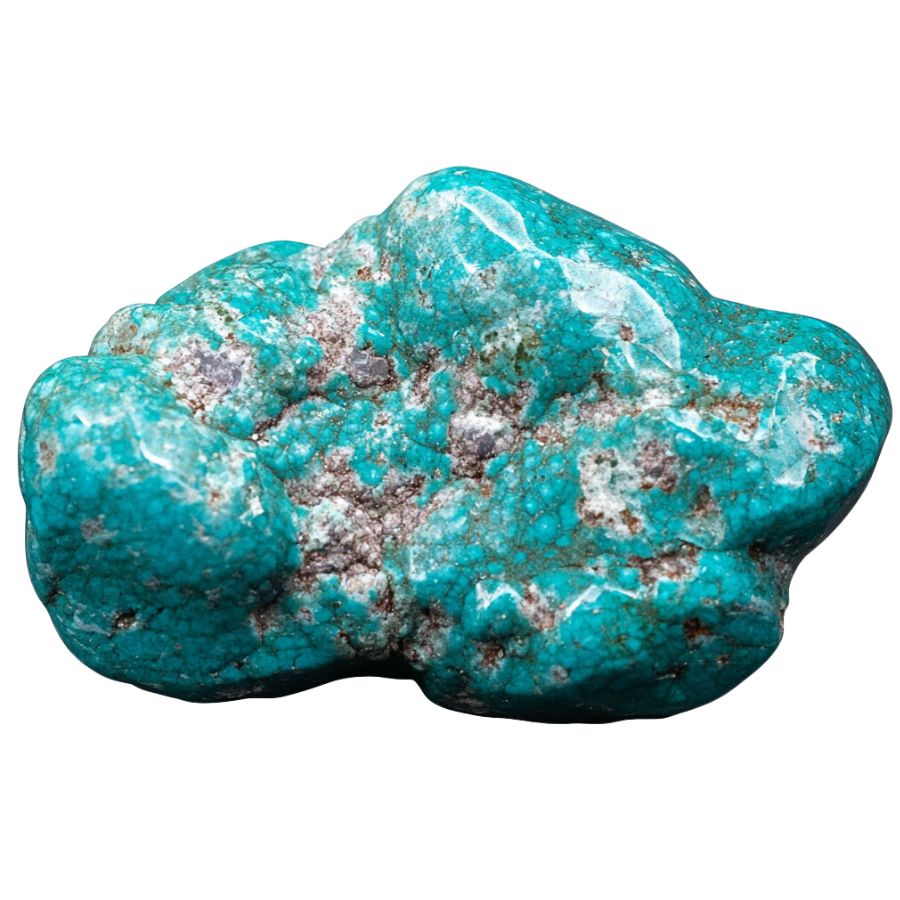
Bisbee Turquoise stands out with its vibrant blue shades, ranging from deep indigo to light robin’s egg blue. Green hues are less common but still occur.
Its distinctive matrix often displays a striking spiderweb pattern against a reddish-brown backdrop.
This stone’s unique appearance comes from its host rock color and gloss. Unlike some turquoise with metallic matrices, Bisbee’s matrix is typically more earthy and varied in color.
Bisbee Turquoise is highly valued for its quality and rarity. Its historical significance, being one of the oldest turquoise sources in North America, adds to its appeal among collectors and enthusiasts.
Royston Turquoise

Royston Turquoise is a gem of many faces. Its colors can shift dramatically, even within a single stone.
You might find a piece that starts as a soft blue and gradually transforms into a rich green. This color play is a hallmark of Royston Turquoise.
The stone’s matrix is equally fascinating. The matrix can create intricate landscapes within the turquoise, resembling golden sunsets or stormy skies.
Royston Turquoise is also known for its ability to take an exceptionally high polish. This quality, combined with its natural hardness, makes it a favorite for jewelry that can withstand daily wear.
Dry Creek Turquoise

Dry Creek Turquoise stands out with its pale pastel blue color, similar to Larimar. It often has light brown, golden yellow, or orange webbed matrices, adding to its beauty.
Unlike many turquoise types, it’s naturally hard and takes a stunning polish without treatment.
This stone is quite rare. It was discovered in the 1990s in an area with low levels of heavy metals. These metals usually give turquoise its bright colors. The unique geological setting results in Dry Creek’s captivating pale blue hue.
The natural hardness and ability to take a high polish make Dry Creek Turquoise special.
Ithaca Peak Turquoise

Ithaca Peak Turquoise is known for its stunning range of blues. It can be light blue with black spider-webbing or deep rich blue with black matrix.
Some pieces even have quartz matrix and pyrite inclusions. The most valued stones have vibrant to dark blues with good pyrite inclusions.
What makes this stone unique is its pyrite. In Ithaca Peak Turquoise, the pyrite often has a brassy color. This helps tell it apart from similar stones like Morenci turquoise.
Recently mined Ithaca Peak Turquoise looks different from older pieces. The new stones are lighter blue to green and usually don’t have a webbed matrix. This change in appearance over time adds to the stone’s interesting history.
What Raw Turquoise Looks Like
When you’re going to collect the raw turquoise, it’s important to know what to look for. Let’s talk about how you can identify genuine raw turquoise.
You only need to know a few things in order to find it, but having a guide will be very helpful.
DON'T MISS OUT ON ANY GREAT FINDS!
While you're out searching for Turquoise you're going to find A LOT of other interesting rocks and minerals along the way. The last thing you want to do is toss out something really interesting or valuable. It can be easy to misidentify things without a little guidance.
You absolutely need a good reference guide in order to understand what you're looking at!
We've put together a fantastic field guide that makes identifying 140 of the most interesting and valuable rocks and minerals you will find REALLY EASY. It's simple to use, really durable, and will allow you to identify just about any rock and mineral you come across. Make sure you bring it along on your hunt!
Now, back to the identification specifics:
Look for the Blue-Green Color

The color is the big clue. Rough turquoise is often blue or green, sometimes with hints of both.
The blue comes from copper, while the green hints at more iron or other minerals.
Real turquoise tends to have a more vibrant, consistent color. If it looks too perfect, like solid blue or green with no variations, be cautious. Nature isn’t that perfect!
Assess the Density and Weight
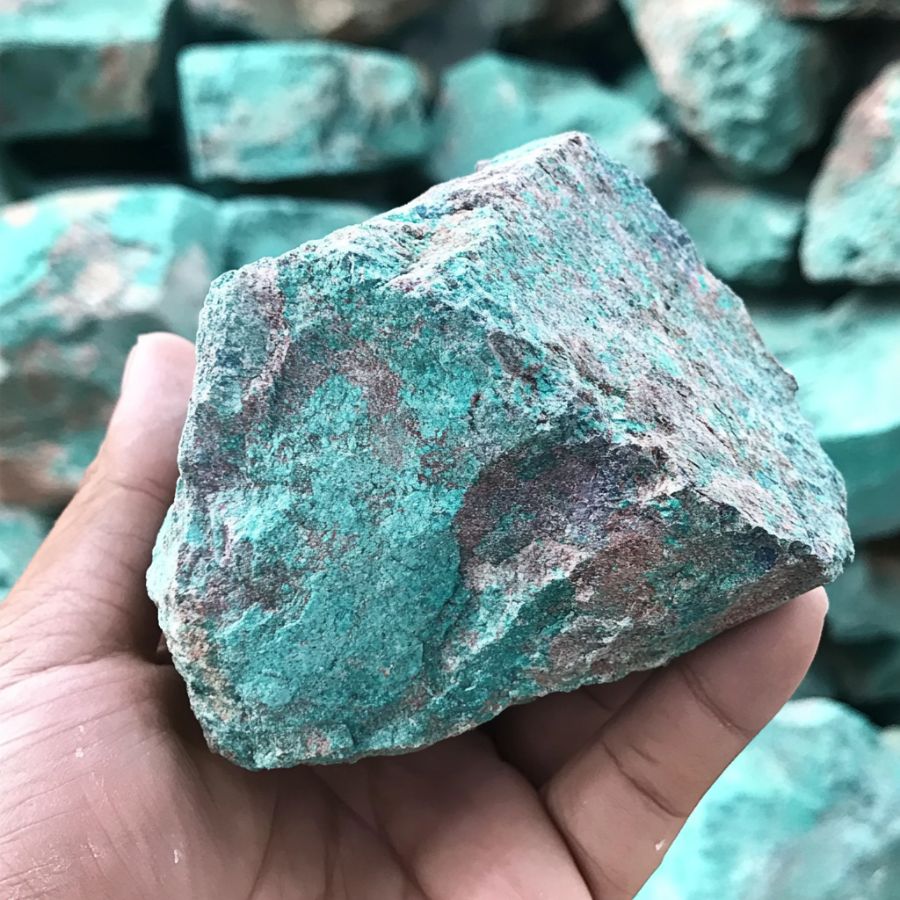
Pick up the stone and feel its weight. Real turquoise is pretty dense, so it feels heavier than it looks. If the stone feels too light, it might not be genuine.
Authentic turquoise has a specific gravity of about 2.5 to 2.9, making it heavier than many imitations.
The density comes from the minerals packed tightly together over millions of years. A heavier stone usually means a better-quality piece.
Check for a Glassy or Waxy Luster

Rough turquoise often has a glassy or waxy luster, not too shiny but not dull either. When you hold it up to the light, the surface might have a soft, smooth sheen. This luster is key.
A rough piece with a good luster usually indicates that it’s real turquoise and not a fake. You’ll notice that it reflects light in a muted way, not too bright.
Consider the Stone’s Shape and Texture

Rough turquoise isn’t always smooth. It often has a bumpy, uneven texture because it forms in cracks and crevices of other rocks.
The stone’s shape might be irregular or lumpy. This natural texture is a telltale sign that you’re holding real turquoise and not a polished or treated piece.
A Quick Request About Collecting
Always Confirm Access and Collection Rules!
Before heading out to any of the locations on our list you need to confirm access requirements and collection rules for both public and private locations directly with the location. We haven’t personally verified every location and the access requirements and collection rules often change without notice.
Many of the locations we mention will not allow collecting but are still great places for those who love to find beautiful rocks and minerals in the wild without keeping them. We also can’t guarantee you will find anything in these locations since they are constantly changing.
Always get updated information directly from the source ahead of time to ensure responsible rockhounding. If you want even more current options it’s always a good idea to contact local rock and mineral clubs and groups
Tips on where to look
Once you get to the places we have listed below there are some things you should keep in mind when you’re searching:
Riverbeds

Look for turquoise in riverbeds. Over time, water flow can expose hidden stones.
Sediment may hold the gems you’re after. Be prepared to dig through gravel and dirt to find them.
Abandoned Mines
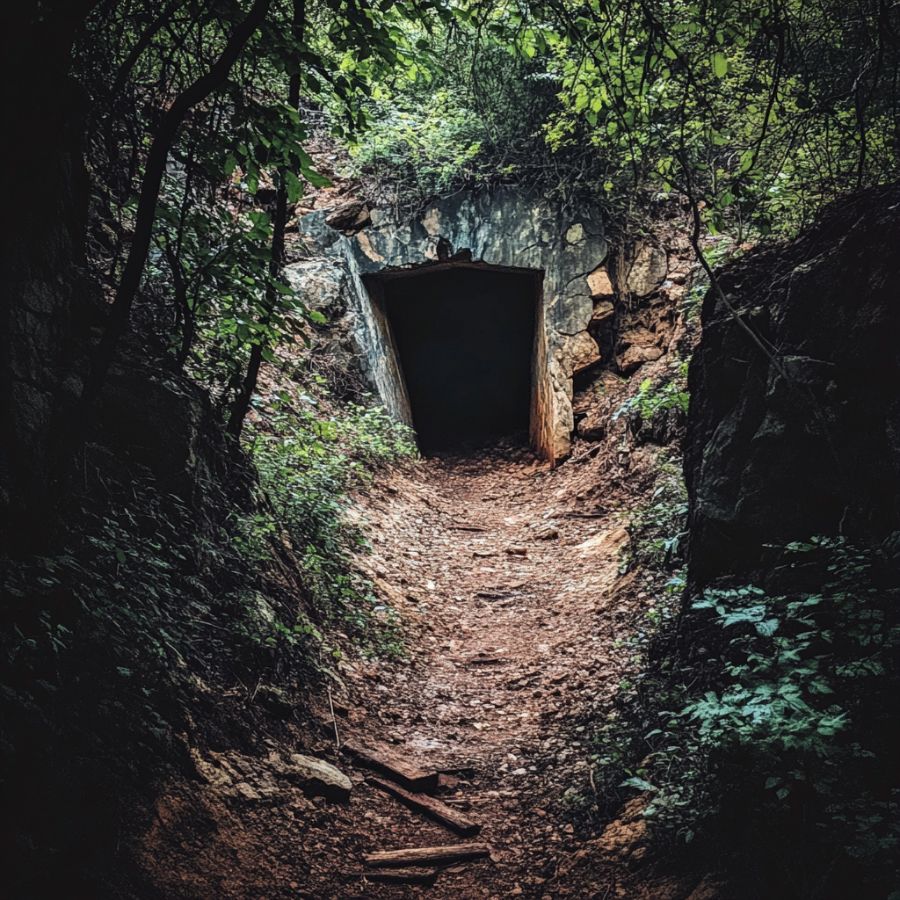
Old mines can be treasure troves for turquoise. These sites often have loose rocks where turquoise might be hiding.
Always be careful while exploring abandoned areas, though.
Hillsides

Check hillsides, especially where erosion is visible. Rain and wind can uncover layers of earth, exposing turquoise.
It’s a bit of a hunt, but it can be rewarding. Sometimes, you’ll find small stones just lying on the surface.
Rocky Outcrops

Rocky outcrops are great places to search. They are full of minerals and might have turquoise.
Explore the cracks and crevices. Turquoise often hides in these tight spaces.
The Types Of Turquoise Found In Nevada
Nevada is famous for its colorful turquoise, each type with its own unique charm. The kind of turquoise you find depends on the mine it comes from.
Different mines in Nevada give us turquoise with different colors and patterns. Some might have a smooth blue while others show off eye-catching greens mixed with interesting web-like patterns.
Here are some of the types of turquoise you’ll find in Nevada:
- Blue Diamond turquoise
- Lone Mountain turquoise
- Number 8 turquoise
- Damale turquoise
- Dry Creek turquoise
- Fox turquoise
- New Lander turquoise
- Blue Ridge turquoise
- Carico Lake turquoise
- Royston turquoise
- The deep experience and understanding of our team about the area
- Recommendations from local groups and clubs
- How easy it is to get the a particular location
- Safety and potential hazards when collecting
- Weighing private and public locations
- The ability for both experienced and novice geode enthusiasts to find great samples
With these factors in mind we’ve been able to put together a fantastic list that just about anyone can use!
The Best Places To Find Turquoise in Nevada

Finding turquoise can be a real adventure, but it’s not always easy. The search requires patience and a keen eye, as the blue-green mineral likes to hide in the most unexpected places.
Without someone to show you the ropes, you might walk right past it, never knowing it was there. That’s why having the right guidance is key to uncovering these hidden gems.
Royston Turquoise Mine

The Royston Turquoise Mine is a bustling hub for those seeking the thrill of unearthing their own piece of Nevada turquoise. This mine is known for a wide variety of turquoise, ranging in color from deep green to rich, sky blue.
The geological conditions here are just right for the formation of this mineral, with the right mix of elements and a long history of geological processes at play. The terrain is rugged and the mine itself is a testament to the area’s rich mineral bounty.
While the Royston Turquoise Mine welcomes visitors to experience the excitement of mining, not all mines and claims in Nevada are open to the public.
The Nevada Division of Minerals & the Commission on Mineral Resources have clear guidelines and rules for rock collecting.
To ensure that collectors are doing things right, a quick check with these authorities will provide the necessary information on how to responsibly collect rocks and enjoy the natural resources.
Where we found turquoise in the Royston Turquoise Mine
The Otteson Brothers Turquoise Mine Tour gives visitors a chance to explore these veins and uncover turquoise themselves.
The tours guide rockhounds to the promising parts of the mine where they can dig for their own pieces of this blue-green mineral.
Lander County

Lander County is a place of diverse landscapes, where the rugged mountains meet wide-open valleys. The geography here is a mix of high desert terrain and mountainous areas, with peaks rising sharply against the skyline.
The ground is a patchwork of sagebrush flats and rocky outcrops, and the land tells a story of a dynamic geological past.
Geologically, it’s a place where you can see the forces of the earth at work, with exposed rock formations that hint at volcanic activity and the movement of tectonic plates long ago.
This creates a variety of minerals and rocks, making the area a spot of interest for rockhounds and geologists.
Where we found turquoise in Lander County
Lander County contains several turquoise mines, each offering different shades and qualities of the stone.
The Battle Mountain area mines, Damale Mine, Dry Creek Mine, Fox Mine, New Lander Mine, and Blue Ridge Mine are just some of the places where to mine for turquoise.
Keep in mind that these mines are typically on private property, so it’s essential to get permission from the owners before attempting to explore or collect any minerals.
Esmeralda County
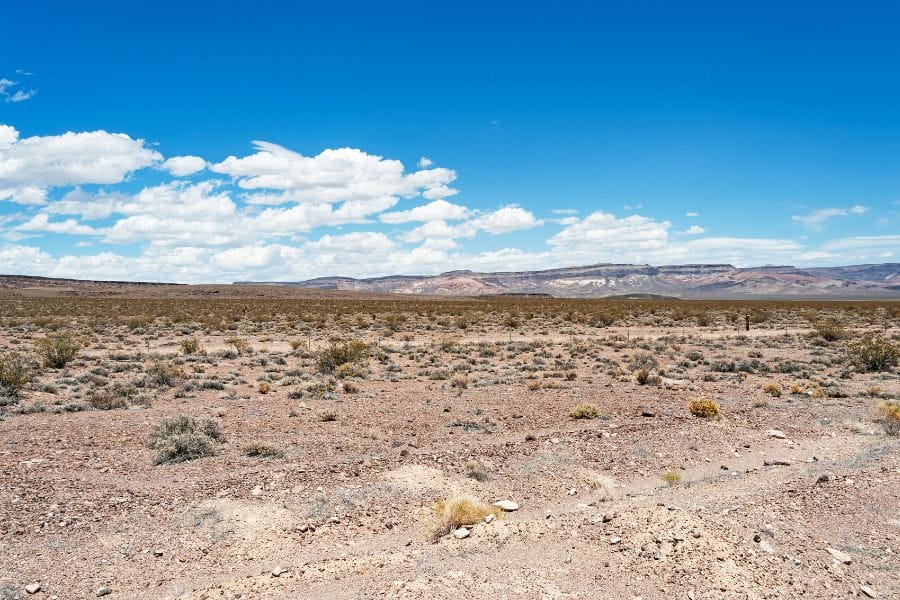
Esmeralda County is a region of stark beauty with a landscape that’s both rough and majestic. Its geography is characterized by sweeping valleys bordered by towering mountains, creating a dramatic contrast that’s a feast for the eyes.
The terrain is a mix of arid desert basins and rocky, mountainous areas that rise up from the flatlands. Geologically, it’s a showcase of natural history, with exposed rock formations and diverse mineral deposits that draw rockhounds and geologists alike.
The county is a patchwork of volcanic remnants, sedimentary layers, and complex fault systems that tell the tale of the earth’s crust in motion.
This area is a field laboratory where the ground beneath holds clues to the processes that have shaped the region over millennia.
Where we found turquoise in Esmeralda County
Esmeralda County is dotted with numerous turquoise mines, where Nevada turquoise is still found today. Sites like the Lone Mountain Mine and Ajax Mine are well-known spots where this blue-green mineral is extracted.
Additionally, the Monte Cristo Range area mines and the Candelaria Mining District also have a history of turquoise mining. These locations, including the area around the ghost town of Basalt, offer potential finds.
It’s important to remember that these mines are often on private property, so securing permission from the owners is a must before setting out to explore or collect.
Pilot Range

The Pilot Range is a striking collection of mountains that cut a dramatic silhouette against the sky. The geography here is a blend of sharp peaks and broad valleys that stretch out under a canopy of clear, wide skies.
Terrain-wise, the area is a mix of rugged cliffs, steep slopes, and rolling hillsides covered with a tough blanket of shrubs and grasses.
Geologically, the range is a showcase of ancient rocks, with exposed formations that reveal a history of volcanic activity and the slow but relentless shift of tectonic plates.
Minerals are plentiful in the area, telling tales of the earth’s inner workings that are a delight for any rockhound to uncover.
Where we found turquoise on the Pilot Range
In the Pilot Range, rockhounds can find pockets of turquoise in the weathered and exposed rocks that scatter the slopes.
The turquoise in this area is usually nestled in hidden veins that can be revealed through careful exploration and knowledge of the landscape. Learning how to find turquoise in Nevada involves understanding these geological clues.
Excelsior Mountains

The Excelsior Mountains are a remarkable chain of high, rugged peaks that dominate the skyline. This range is characterized by steep slopes and valleys, interspersed with areas of flat, open spaces.
The terrain is a challenging mix of rocky outcrops and loose gravel, making it an exciting place for those who like to explore.
Geologically, the mountains are composed of a variety of rock types, including volcanic and sedimentary rocks, which hint at a vibrant geological past.
The diversity of rocks in the Excelsior Mountains makes them a fascinating area for study, revealing a complex history of the forces that have shaped the earth’s surface.
Where we found turquoise on the Excelsior Mountains
Turquoise has been discovered at the eastern end of the Excelsior Mountains. Here, the blue-green mineral is scattered across multiple claims, where it lies hidden among the slopes and at the head of a steep, rocky gulch.
Those looking to find turquoise in Nevada will have to do a bit of climbing, but the slopes and gulches in these mountains are known spots where turquoise seekers can try their luck.
Other Great Places To Find Nevada Turquoise

Nevada is a playground for those who love to hunt for minerals, with turquoise being a colorful gem hidden within its landscape. The state is speckled with various areas where this blue-green mineral can be unearthed.
From the dry, dusty trails of remote mountain ranges to the open pits of former mines, these spots offer a chance for discovery. To help rock enthusiasts, here’s a list of areas in Nevada known for their turquoise deposits.
Our recommendations by county
| County | Location |
| Churchill County | Fairview Mining District |
| Churchill County | Jessup Mining District |
| Clark County | Blue Diamond Mine |
| Clark County | Morgan and Smithson-Phillips mines |
| Clark County | Crescent Mining District, New York Mountains |
| Clark County | Potosi Mountain area |
| Clark County | Goodsprings Mining District, Spring Mountains |
| Douglas County | Smith Valley Mining District, Buckskin Range |
| Elko County | Stormy Mountain mine |
| Elko County | Beaver Mining District |
| Elko County | Carlin Black Matrix mine, Merrimac Mining District |
| Elko County | Railroad Mining District |
| Elko County | Edgar turquoise mine, Swales Mountain Mining District |
| Elko County | Wells Mining District |
| Eureka County | Number 8 Turquoise Mine |
| Eureka County | Dunphy area, Tuscarora Mountains, Copper King Mine. |
| Eureka County | Lynn Mining District |
| Eureka County | Maggie Creek Mining District |
| Humboldt County | Iron Point Mining District |
| Lander and Nye Counties | Toiyabe Range |
| Lincoln County | Alamo area |
| Lincoln County | Delamar Mountains |
| Lyon County | Wabuska area |
| COUNTY | LOCATION |
| Lyon County | Yerington area |
| Lyon County | Singatse Range |
| Mineral County | Montezuma or Troy Springs Mine |
| Mineral County | Moqui-Aztec Mine |
| Mineral County | Turquoise Bonanza Mine |
| Mineral County | Halley’s Comet Mine |
| Mineral County | Blue Daze Mine |
| Mineral County | Candelaria Mining District |
| Mineral County | Eastside Mining District |
| Mineral County | Holy Child Claims |
| Mineral County | Lucky Lynn Mine |
| Mineral County | Midway Turquoise Mine |
| Mineral County | Rand Mining District |
| Mineral County | Silver Star Mining District |
| Mineral County | Smith Pit Mine |
| Nye County | Belmont Silver Mining District |
| Nye County | Blue Shah Mine |
| Nye County | Easter Blue Mine |
| Nye County | Indian Blue mine |
| Nye County | Paradise Range |
| Nye County | Blue Eagle area |
| Nye County | Tonopah area |
| Nye County | Cactus Range |
| Nye County | Gabbs Mining District |
| Nye County | Hot Creek Range |
| Nye County | San Antonio Mountains |
| Nye County | Toquima Range |
| Nye County | Union Mining District |
| Pershing County | Nevada Massachusetts Company |
| Pershing County | Rye Patch Mining District |
| White Pine County | Robinson Mining District |
Common Turquoise-Hunting Questions

Knowing how to find turquoise in Nevada is a mix of skill, patience, and a bit of local knowledge. Here’s the information you need to know if you want to know how to find turquoise in Nevada.
Is it illegal to collect turquoise in Nevada?
Collecting turquoise in Nevada isn’t illegal, but there are rules you need to follow. The land you’re on will determine what you can do.
If it’s public land, like Bureau of Land Management (BLM) areas, you’re usually allowed to collect small amounts of rocks and minerals for personal use. But, if the land is private, you must get permission from the landowner.
Even on public land, there might be specific rules about what tools you can use. It’s a good idea to check with the local BLM office and other authorities to understand the guidelines.
Some areas are also off-limits for collecting, like National Parks or certain wilderness areas.
The Best Places To Buy Turquoise In Nevada

Across the state, there are shops that specialize in selling turquoise and other rocks and minerals, offering a range of pieces from rough stones to finely crafted jewelry.
Each shop has its own unique selection, making the search for the perfect piece of turquoise an exciting experience. Below are our favorite places to visit
- Erick Begay Native American Jewelry – N8tiveArts – 1311 Boulder City Pkwy, Boulder City, NV 89005
- Hoover Dam Trading Post – 1300 Boulder City Pkwy, Boulder City, NV 89005
- Earthe Energe – 1023 Rock Blvd A, Sparks, NV 89431
- The Jewelry District – 4300 Meadows Ln Suite 2060, Las Vegas, NV 89107
- Quartzsite Minerals – 4300 Meadows Ln #1290, Las Vegas, NV 89107


